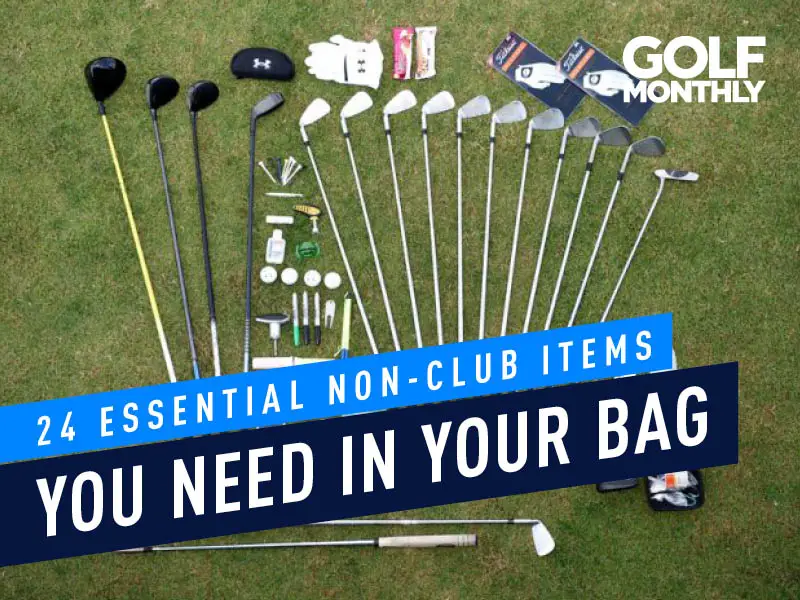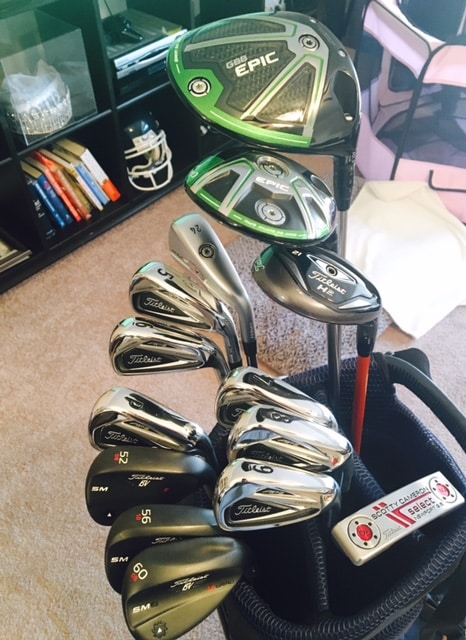What Clubs Should Be In My Golf Bag

Choosing the right set of clubs for your golf bag is crucial to your success on the course. As a golfer, having the appropriate clubs can significantly impact your game and help you achieve optimal performance. But with so many options available, it can be overwhelming to determine which clubs should be in your bag. In this guide, we will explore the essential clubs that every golfer should consider carrying and provide insights into their attributes and functionalities.
Having a well-rounded set of clubs ensures that you have the right tools to tackle various situations on the golf course. Each club is designed to serve a specific purpose and offers unique characteristics to enhance your game. Whether you’re a beginner or an experienced player, understanding the different types of clubs and their functionalities is essential for making informed decisions about your club selection.
Throughout this guide, we will delve into the key categories of golf clubs, including drivers, woods, irons, wedges, and putters. We will discuss the attributes of each club type, such as loft, shaft length, and clubhead design, and how these attributes influence performance. By understanding the purpose and characteristics of each club, you can make educated choices about the clubs that will best suit your playing style and skill level.
So, if you’re ready to optimize your golf bag and take your game to the next level, let’s dive in and explore the world of golf clubs and the essentials that should be in your golf bag.

Understanding the Basics
Before diving into the specific clubs, let’s start by understanding the basics of golf club classification and the purpose of each type. This foundational knowledge will help you make informed decisions about which clubs to include in your golf bag.
Golf Club Categories
Golf clubs are generally categorized into four main types:
- Woods: Designed for long-distance shots, woods have larger heads and are typically used for tee shots and fairway shots.
- Irons: Irons are versatile clubs that can be used for various shots, including fairway shots, approach shots, and shots from the rough.
- Wedges: Wedges are primarily used for shots around the green and in bunkers. They provide high loft and control, allowing you to make precise shots.
- Putters: Putters are used on the green to roll the ball into the hole. They have a flat face and are designed for accuracy and control.
Club Attributes
When choosing clubs for your golf bag, it’s essential to consider the following attributes:
- Loft: The loft of a club refers to the angle of the clubface. Higher lofted clubs produce higher shots with more vertical trajectory.
- Shaft Length: The length of the shaft affects the distance and control of the club. Longer shafts typically generate more clubhead speed, resulting in greater distance.
- Clubhead Design: The design of the clubhead influences forgiveness, accuracy, and playability. Different clubhead designs cater to different skill levels and playing styles.
Now that we have a basic understanding of golf club classification and attributes, let’s explore the specific clubs that should be in your golf bag.
Essential Clubs for Every Golfer
Having a well-rounded set of clubs ensures you have the necessary tools to handle various situations on the golf course. Here are the essential clubs that should be in your golf bag:
1. Driver
The driver is a type of wood with the largest clubhead. It is primarily used for long-distance tee shots, allowing you to hit the ball with maximum power and distance off the tee.
Attributes:
- Loft: Typically between 8 and 12 degrees, with adjustable options available.
- Shaft Length: Longer shaft to generate more clubhead speed.
- Clubhead Design: Large clubhead for maximum forgiveness and distance.
2. Fairway Woods
Fairway woods are versatile clubs used for shots from the fairway or rough. They provide a balance between distance and control, making them ideal for long approach shots to the green.
Attributes:
- Loft: Varies depending on the specific fairway wood, typically ranging from 15 to 20 degrees.
- Shaft Length: Slightly shorter than the driver for better control.
- Clubhead Design: Mid-sized clubhead with a shallow face for easy launch.
3. Irons
Irons are the most versatile clubs in your bag and are used for various shots throughout the course. They come in numbered sets, including long irons, mid-irons, and short irons.
Attributes:
- Loft: Varies for each iron, with the long irons having lower loft and the short irons having higher loft.
- Shaft Length: Gradually shorter as you move from long irons to short irons.
- Clubhead Design: Different designs cater to different skill levels, with game improvement irons offering forgiveness and player’s irons providing more control.
4. Wedges
Wedges are crucial for shots around the green and in bunkers. They offer high loft, allowing you to generate backspin and make precise shots to get closer to the pin.
Attributes:
- Loft: Varies for each wedge type, including pitching wedge, gap wedge, sand wedge, and lob wedge.
- Shaft Length: Similar to short irons, with slightly shorter shafts for better control.
- Clubhead Design: Wedges have a specialized design with increased loft, a higher center of gravity, and specific sole grinds for different shots.
5. Putter
The putter is used on the green to roll the ball into the hole. It is essential for accuracy and control, as putting can significantly impact your overall score.
Attributes:
- Loft: Typically has minimal loft to keep the ball rolling smoothly along the ground.
- Shaft Length: Varies based on personal preference, with options for longer or shorter shafts.
- Clubhead Design: Various putter designs available, including blade-style putters and mallet putters, each with their own feel and alignment aids.
Customizing Your Golf Bag
While the above clubs are considered essential, it’s important to note that every golfer has unique preferences and playing styles. Some golfers may choose to include additional clubs or customize their set based on their skill level, course conditions, and personal preferences.
Assessing Your Game
To determine which additional clubs to include in your golf bag, consider the following factors:
- Skill Level: Beginners may benefit from additional forgiveness clubs, such as hybrid clubs, while more advanced players may prefer specialized clubs like driving irons.
- Course Conditions: If you frequently play on courses with long par 3s, you may consider adding a hybrid club with more distance to your bag.
- Playing Style: Analyze your game and identify areas where you may need additional clubs to improve performance. For example, if you struggle with bunker shots, adding a lob wedge to your bag can be beneficial.
Customizing your golf bag allows you to tailor your club selection to your individual needs, giving you a better chance of success on the course.
Conclusion
Choosing the right clubs for your golf bag is essential for maximizing your performance and enjoyment on the course. Understanding the purpose and attributes of each club type will guide you in making informed decisions about the clubs you should include in your bag. Remember to consider your skill level, course conditions, and playing style when customizing your set. By having the right clubs in your bag, you’ll be well-prepared to tackle any golf course and improve your overall game.





